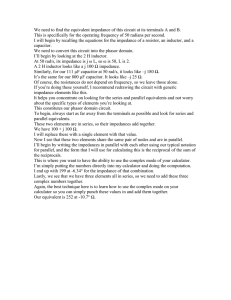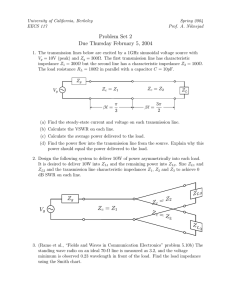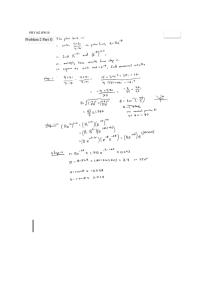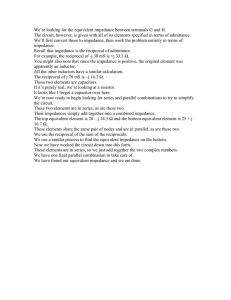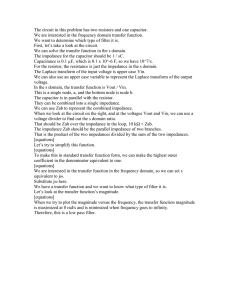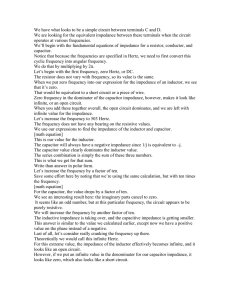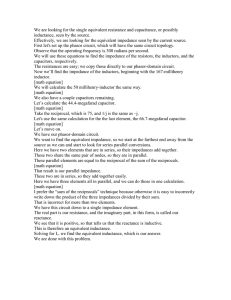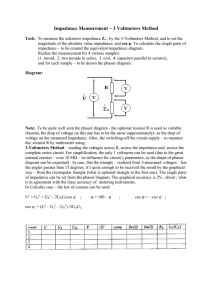In this problem, we consider a number of different circuit... impedance of each of these elements at various operating frequencies.
advertisement
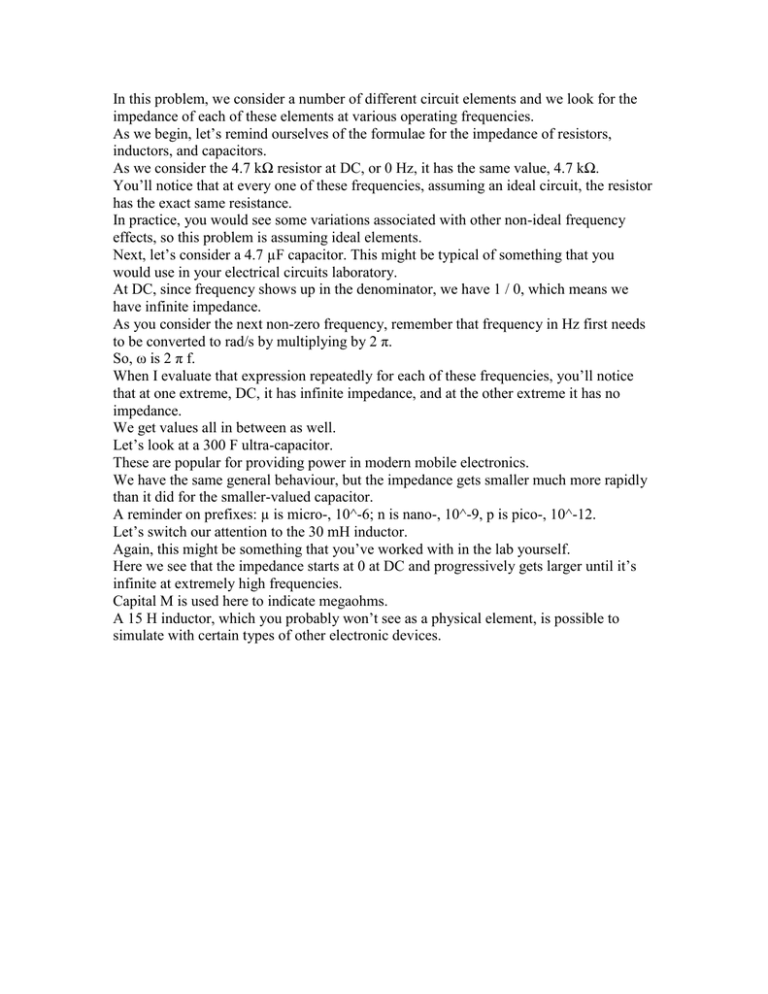
In this problem, we consider a number of different circuit elements and we look for the impedance of each of these elements at various operating frequencies. As we begin, let’s remind ourselves of the formulae for the impedance of resistors, inductors, and capacitors. As we consider the 4.7 kΩ resistor at DC, or 0 Hz, it has the same value, 4.7 kΩ. You’ll notice that at every one of these frequencies, assuming an ideal circuit, the resistor has the exact same resistance. In practice, you would see some variations associated with other non-ideal frequency effects, so this problem is assuming ideal elements. Next, let’s consider a 4.7 µF capacitor. This might be typical of something that you would use in your electrical circuits laboratory. At DC, since frequency shows up in the denominator, we have 1 / 0, which means we have infinite impedance. As you consider the next non-zero frequency, remember that frequency in Hz first needs to be converted to rad/s by multiplying by 2 π. So, ω is 2 π f. When I evaluate that expression repeatedly for each of these frequencies, you’ll notice that at one extreme, DC, it has infinite impedance, and at the other extreme it has no impedance. We get values all in between as well. Let’s look at a 300 F ultra-capacitor. These are popular for providing power in modern mobile electronics. We have the same general behaviour, but the impedance gets smaller much more rapidly than it did for the smaller-valued capacitor. A reminder on prefixes: µ is micro-, 10^-6; n is nano-, 10^-9, p is pico-, 10^-12. Let’s switch our attention to the 30 mH inductor. Again, this might be something that you’ve worked with in the lab yourself. Here we see that the impedance starts at 0 at DC and progressively gets larger until it’s infinite at extremely high frequencies. Capital M is used here to indicate megaohms. A 15 H inductor, which you probably won’t see as a physical element, is possible to simulate with certain types of other electronic devices.
